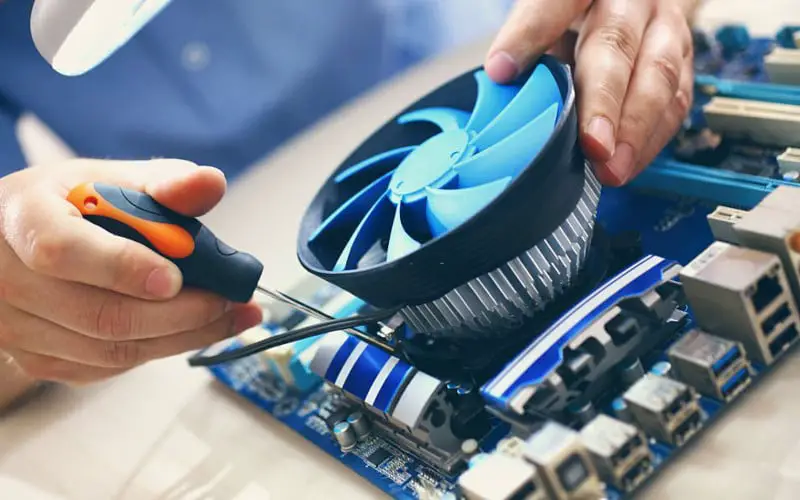Cleaning and performing maintenance tasks regularly are essential to keep your computer running smoothly. One of the most important aspects of maintaining a computer is cleaning out the dust and debris that can accumulate inside the case.
While using a vacuum cleaner may seem like an easy solution, there are a few things you should consider before using one on your PC.
Is It Safe to Use a Vacuum to Clean a PC?
Use a low-powered keyboard vacuum instead of a home vacuum to clean your keyboard. Home vacuums have too much power and might suck up detachable keys on your keyboard.
To vacuum your computer, you should use a low-power handheld device designed for electronics. These have weaker suction, making them less likely to break delicate parts.
You also want to steer clear of full-size vacuums, as the strong suction can ruin your machine or pull out internal components.
Unplugging your computer and turning it off before vacuuming is always best. This will reduce the amount of static electricity that builds up and could damage delicate components. If you want to be extra careful, touch a metal object (like the case of your CPU) to discharge any static electricity on your body before beginning the cleaning process.
Related: How To Clean A Laptop Fan
How to Clean Your PC with a Vacuum?
Now that you’ve taken the necessary precautions, it’s time to start cleaning your PC.
Follow these steps to effectively and safely use a vacuum to clean your computer:
- Remove dust or debris outside the case using a dry cloth or duster. This will help prevent the dust from being redistributed inside the case when you open it up.
- Open the case of your computer and locate the power supply. This is typically located at the bottom of the case, near the back.
- Carefully remove the power supply from the case. This will allow you to access the inside of the case more efficiently and also allow you to clean the power supply itself.
- Use the vacuum to gently clean the inside of the case, focusing on the areas where dust and debris are most likely to accumulate. These areas include the fans, heat sinks, and any other openings in the case. Be sure to use a low-power setting and be gentle, as you don’t want to damage any components.
- Once you have vacuumed the inside of the case, use a dry cloth or compressed air to remove any remaining dust or debris. Be sure to pay special attention to the power supply and other sensitive components, as these are more prone to dust and dirt accumulating.
- Replace the power supply and close the case.
- Turn your computer back on and make sure everything is working correctly.
Tips for Keeping Your PC Clean
While vacuuming is an effective way to clean your PC, it’s not the only method.
Here are a few additional tips to help keep your computer clean and running smoothly:
- Use a dust cover: A dust cover can help prevent dust and debris from accumulating inside your computer, making it easier to keep clean.
- Use a compressed air can: Compressed air is a great way to remove dust and debris from hard-to-reach areas, such as the power supply and other sensitive components.
- Use a static-free cloth: A static-free cloth is a specially designed cloth that is safe for electronic devices and won’t generate static electricity. This makes it a good choice for cleaning your computer, as it won’t damage any components or create any additional risk of static electricity.
- Clean regularly: It’s a good idea to clean your computer regularly rather than wait until it is filthy. This will help prevent dust and debris from accumulating to the point where it could cause problems or damage your computer.
- Monitor your computer’s temperature: Dust and debris can cause your computer to run hotter than usual, leading to overheating problems. Keep an eye on your computer’s temperature using a monitoring tool, and clean it regularly to help prevent overheating issues.
Conclusion
Using a vacuum to clean your PC is safe if you take the necessary precautions and use a low-power, handheld vacuum designed for computer cleaning. Be sure to turn off and unplug your computer before cleaning, discharge any static electricity on your body, and use a gentle touch to avoid damaging any components.
By following these steps and incorporating other cleaning techniques, such as using a dust cover and a compressed air can, you can effectively and safely keep your computer running smoothly.






